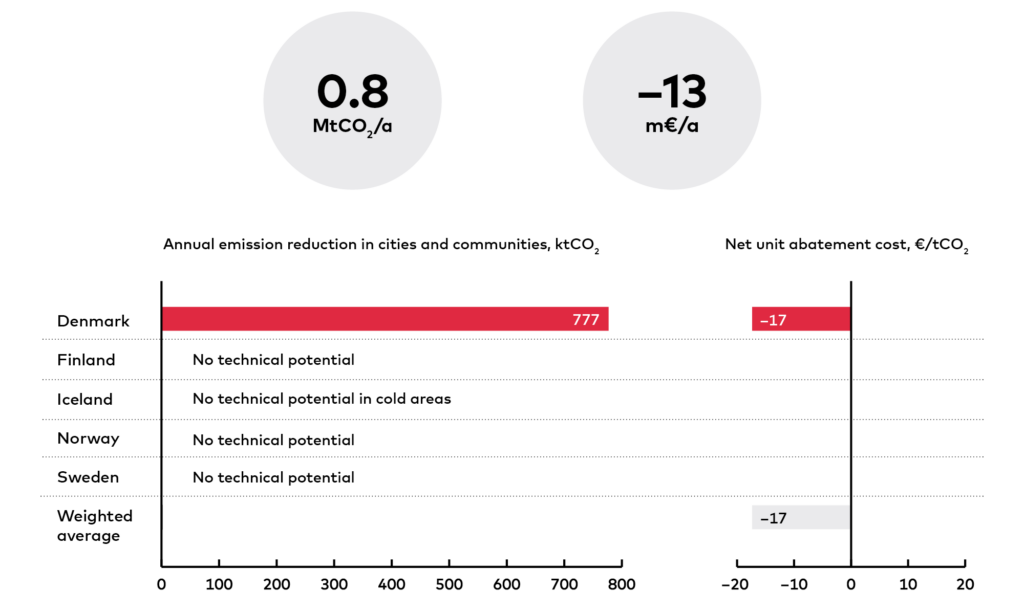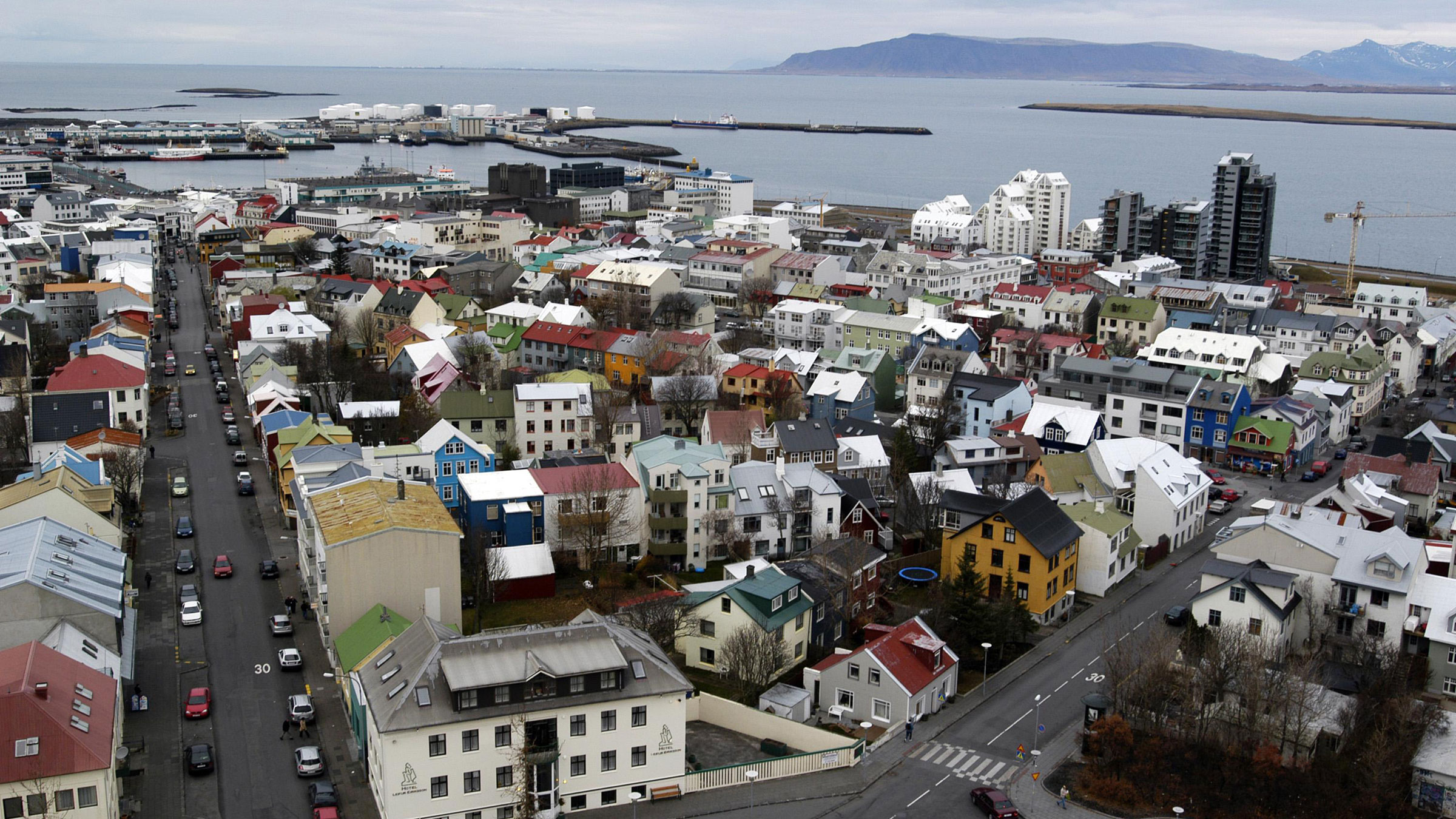Climate impact
Geothermal district heating was first employed in Reykjavik in 1930 and has since completely replaced coal and fuel oil, which used to be the main heat sources. Today Reykjavik has the world’s largest municipal geothermal heating service, and nearly all houses in the greater Reykjavik area are connected to it.
Water from geothermal areas contains carbon dioxide. In low-temperature fields the content is low, and consequently the fugitive emissions are negligible. In cooler geological areas carbon dioxide separation is generally not an issue, and there are no emissions. The rest of the emissions are determined by the energy used to run the pumps and the possible heat pumps.
Denmark has geothermal reservoirs which it can use to produce heat for district heating, especially if heat pumps are used. The potential has not been exhaustively mapped, but the introduction of 376 MW’s worth of geothermal plants in 28 district heating networks has been investigated. We estimate that this capacity could reduce emissions by 0.8 MtCO2.
Costs and savings
The investment costs of geothermal heat generation are high and include screening geothermal potential, geophysical studies, the drilling of wells and pumping equipment. Additional costs may come from a potential heat pump plant and the possible extension of the district heat network or fortification of the grid. The operation costs are low and consist mainly of the electricity required by the pumps.
We assume the geothermal heat would not fully replace a heat or cogeneration plant in the district heating network, and therefore compare the geothermal heat cost to the variable cost of thermal plants. The weighted average abatement cost in Denmark is estimated to be –17 €/tCO2.

Other benefits
Replacing fuel combustion with geothermal heat and heat pumps cuts air pollution, which has been clearly demonstrated in Reykjavik. It also reduces reliance on fuel imports and enhances energy security.
A geothermal plant does not cause noise and does not necessarily require above-ground structures and therefore does not need to take up much space. If the heat is extracted by electric heat pumps, they can be used for balancing the national electricity demand. Geothermal boreholes can also be used for heat storage during the summer.
Barriers
- The heat source needs to be located close to the heat users so that the investment in the extended pipe infrastructure and heat losses do not become too large. Usable geothermal reservoirs do not exist everywhere.
- In groundwater areas geothermal exploration is often banned.
- The potential of a reservoir is never certain before an exploration well is drilled and the properties tested, and someone must take on this risk.
- Investment costs are high, and it generally only makes sense to use geothermal heat as a baseload to secure a sufficient number of load hours and in sufficiently large networks.
- The required district heating water temperature in winter may be higher than can be provided by heat pumps and the heat requires priming. If this cannot be done with existing facilities, it can become expensive.
- While we estimate that geothermal heat brings savings in Denmark when compared with fossil fuels, the current subsidies for biomass combustion and the high taxation of electricity for heat pumps make geothermal heat unprofitable in comparison with biomass.
Enablers
Geophysical modelling can significantly reduce the risks of exploration.
- Traditional geothermal district heating is based on proven geotechnical and drilling technology from the oil and gas industry, and there is no technology risk.
- Enough use hours, relatively inexpensive electricity and high fossil fuel taxes make heat pumps profitable.
- Low network temperature allows the heat to be used without priming. In Denmark, most of the district heating networks operate with a supply temperature easily supplied with heat pumps.
- In the Netherlands, the government helps businesses to cover the risks associated with drilling. In Denmark, Icelandic and Danish drilling experts have joined forces to form a company which offers turnkey installations and will thereby take on the investigation risk.
































RELATED SOLUTIONS